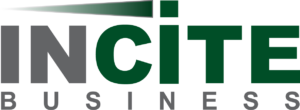Don’t Let the Unknown Stop Your Strategy
Over the past few months I’ve had the opportunity to talk with a wide variety of participants in the financial services industry. Most of the time the conversations would touch on the impending publication of a regulatory agency’s proposed rules for the small dollar credit industry. We would talk about what the rules might look like, when the rules would be published and when they would become effective. Frequently we would speculate on the impact the rules would have on consumers and the providers in the industry. As you can see, the common theme in these discussions was speculation. We would gather snippets from presentations at conferences or information from published interviews, but there has been very little clarification provided by the government agency to help the industry prepare. Whether this exact situation applies to you or you are being stalled by some other type of pending outcome with multiple scenarios, the following process can help.
Why is this important?
The lack of information is important because it is stopping some from creating and acting on a strategy for their organization. There are many owners and executives delaying creating or modifying their existing strategy because of this huge regulatory unknown. Whether it is because they don’t want to waste time creating a strategy that turns out to be wrong or they don’t have the available resources to effectively work on a strategy because their best people are now focused on compliance instead of growth, a majority are not working on an effective strategy. This is concerning because there are other significant disruptors, beyond regulatory, in the market that need to be addressed. Changing customer demographics, quickly evolving technologies, and the influx of capital to new competition is creating a challenging environment that requires action to stay competitive.
How do you create a strategy for the unknown?
The first thing you should do is identify where your organization is right now. What are your current strengths and weaknesses? What areas of the organization need help? How is competition affecting you? I highly recommend that you get very granular on this with the review of your people, departments, financial status, products, competition, etc.
If there are areas of your organization that are going to be affected by the proposed rules, I would suggest looking at 2 or 3 scenarios for your strategy. At a minimum, I would look at a best-case and worst-case scenario. You would need to decide, but I can see where you might consider the rules not becoming effective at all as the best-case scenario and the rules coming out as previously defined as the worst-case. If you wanted to add a third scenario, you could create a middle-of-the-road scenario that falls somewhere between the best and worst. Once you have your scenarios, you would follow a decision tree type logic to determine your strategy options.
How does this help?
Granted, creating a strategy that is dependent on different possible outcomes is not ideal, but it will potentially give you important clarity in a few areas that will allow you to act now. For instance, if you determine that you want to add a new loan product in your branches to help diversify revenue, you could start the licensing and product definition process. The earlier you get your application in the licensing queue the better in some states. The other example would be if you wanted to introduce data analytics to your lending decisions, this would be beneficial to your existing way of doing business and if/when the new rules are applied. Getting this discipline effectively integrated into your organization takes time and effort. If you determine that you want to offer your customers an omnichannel approach to strengthen relationships, there is some lead time to create that solution. The bottom line is that this approach allows you to act.
How do I start?
Creating a strategic plan takes effort and commitment from key personnel in the organization, especially senior leadership. You have to balance the work everyone is doing for the present and your investment in the future. An important part of strategic planning is getting an unbiased perspective on the organization’s current situation and its ability to achieve future goals. For this reason, organizations benefit from bringing in an outside expert to help facilitate the process. This person will not have the organization’s historical biases to cloud their judgement or the desire to protect their turf. In fact, the right person can ask tough, clarifying questions that will benefit the process and organization. The other benefit of using an outside party is that it will tie up less of your critical resources – allowing your key personnel to continue working on critical projects. Whether you go through this process with internal or external resources, the most important thing is to start!
If you would like to discuss how to create a strategic plan in further detail or would like some assistance taking that first step, please don’t hesitate to contact me. I am here to help you!
